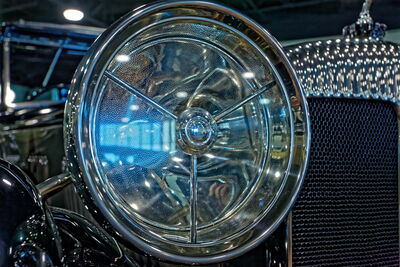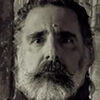Incident Light Metering - It makes more sense than you might think
Apr 4, 2020 15:56:15 #
At the risk of bringing out more comments from photographers who have a single preferred way to determine exposure, I will offer one final look at the subject.
On an earlier thread someone asked, "WHY would I want to burden myself with this?"
Well, if learning is a burden, stop here. Don't read any further and please do not comment. For everyone else, please keep an open mind.
A response on one of the threads was, "A rigid system won't be able to accommodate unpredictable variations such as how much incident light is reflected at the camera."
That comment certainly contained the central issue of the question. However, incident light measuring is not a rigid system and the amount of light reflected from a surface is not all that mysterious.
Let's start with the latter - how much incident light is reflected back to the camera. We are not talking about specular reflections like the image of the sun in a mirror or bouncing off of water or glass. That can be almost as bright the sun itself and equally impossible to render without a strong neutral density filter.
What we are concerned with are diffuse reflections. They can range from around 90% of the incident light down to almost 0%. They come from leaves, skin, earth, rocks, clouds, clothing, paint, etc. If we can see tonality in them then their reflectance is probably well below 90% and well above 0%. If we can see their color, the range is even narrower.
Suppose we start at 96%. What happens each time you cut the incident light intensity in half - one stop? You end up with 48%, 24% 12%, 6%, etc. Middle gray is commonly defined as 18% reflectance or about about 2½ stops below 96%. If you take a reflected meter reading of a middle gray card in direct sunlight, the recommended exposure will do exactly what you would expect - render a JPEG where that card shows up as middle gray.
An incident light meter will come up with the same recommendation as a reflected meter reading plus a gray card. The gray card needs to be in the same light as the subject and so does the incident light meter. But the incident meter means that you do not not need to carry a gray card with you.
If you don't want to carry a separate light meter you can get an app for you smartphone that is almost as precise. Even the Pro version is very inexpensive. Here are a couple of measurements taken by pointing the front camera directly at the sun at noon.

At ISO 100 Exposure Value (EV) 15 is the same as Light Value (LV)

At ISO 400 the EV is increased by two stops to 17 but the LV is still 15
The light value (LV) in full sunlight will never be higher than 15. But if you are taking images of snowy scenes you might want to raise the EV by one (one stop darker) to accommodate some of the specular reflections coming from the snow and ice.
Since we all have a lot of time on our hands right now, why not try it? You might be pleasantly surprised how simple it is.
On an earlier thread someone asked, "WHY would I want to burden myself with this?"
Well, if learning is a burden, stop here. Don't read any further and please do not comment. For everyone else, please keep an open mind.
A response on one of the threads was, "A rigid system won't be able to accommodate unpredictable variations such as how much incident light is reflected at the camera."
That comment certainly contained the central issue of the question. However, incident light measuring is not a rigid system and the amount of light reflected from a surface is not all that mysterious.
Let's start with the latter - how much incident light is reflected back to the camera. We are not talking about specular reflections like the image of the sun in a mirror or bouncing off of water or glass. That can be almost as bright the sun itself and equally impossible to render without a strong neutral density filter.
What we are concerned with are diffuse reflections. They can range from around 90% of the incident light down to almost 0%. They come from leaves, skin, earth, rocks, clouds, clothing, paint, etc. If we can see tonality in them then their reflectance is probably well below 90% and well above 0%. If we can see their color, the range is even narrower.
Suppose we start at 96%. What happens each time you cut the incident light intensity in half - one stop? You end up with 48%, 24% 12%, 6%, etc. Middle gray is commonly defined as 18% reflectance or about about 2½ stops below 96%. If you take a reflected meter reading of a middle gray card in direct sunlight, the recommended exposure will do exactly what you would expect - render a JPEG where that card shows up as middle gray.
An incident light meter will come up with the same recommendation as a reflected meter reading plus a gray card. The gray card needs to be in the same light as the subject and so does the incident light meter. But the incident meter means that you do not not need to carry a gray card with you.
If you don't want to carry a separate light meter you can get an app for you smartphone that is almost as precise. Even the Pro version is very inexpensive. Here are a couple of measurements taken by pointing the front camera directly at the sun at noon.

At ISO 100 Exposure Value (EV) 15 is the same as Light Value (LV)

At ISO 400 the EV is increased by two stops to 17 but the LV is still 15
The light value (LV) in full sunlight will never be higher than 15. But if you are taking images of snowy scenes you might want to raise the EV by one (one stop darker) to accommodate some of the specular reflections coming from the snow and ice.
Since we all have a lot of time on our hands right now, why not try it? You might be pleasantly surprised how simple it is.
Apr 4, 2020 16:12:28 #
I have used incident readings since the 60’s and still do depending on subject and circumstance. It remains a valid technique as do reflected readings, the sunny 16 rule, etc. Just one of the tools in the box.
Apr 4, 2020 16:23:23 #
I have a Sekonic L-558
I don't use it all the time -
But when I do my photos are superior to when I don't employ it's services
I don't use it all the time -
But when I do my photos are superior to when I don't employ it's services
Apr 4, 2020 16:58:32 #
I have been using a incident light meter for the past 50 years, I read a article on incident metering back then. Back in the B&W darkroom days I took a roll of 35 mm shot all the frames exactly like the setting from the meter. Came back process the film set the up filmstrip got my settings from the first negative. Printed and process all the rest of negatives at the same exposure and time they were beautiful.
Apr 4, 2020 16:58:59 #
I have been using a incident light meter for the past 50 years, I read a article on incident metering back then. Back in the B&W darkroom days I took a roll of 35 mm shot all the frames exactly like the setting from the meter. Came back process the film set the up filmstrip got my settings from the first negative. Printed and process all the rest of negatives at the same exposure and time they were beautiful.
Apr 4, 2020 17:37:59 #
Those were the days! Photography was science and art. You could meter off of the palm of your hand for a half stop plus. Push your Tri-X to 800 or 1600...Understand the Zone system to capture dynamic range. We had manual focus, shutter speeds and aperture settings to get the photo that we had pre-visualized. Remember shooting Kodachrome 25 & 64, and getting a little yellow box back with 36 precious exposures, a week later?
We can do the same thing now, using a digital camera on the manual setting! Perhaps with the exception of ASA 25 or 64. Plus with live view, you don’t need a Polaroid to test the shot, and the ISO range is amazing.
I miss my old LunaPro, and love my Sekonic for helping to keep photography a science and an art.
We can do the same thing now, using a digital camera on the manual setting! Perhaps with the exception of ASA 25 or 64. Plus with live view, you don’t need a Polaroid to test the shot, and the ISO range is amazing.
I miss my old LunaPro, and love my Sekonic for helping to keep photography a science and an art.
Apr 4, 2020 17:43:48 #
Ed Broussard wrote:
I have been using a incident light meter for the past 50 years, I read a article on incident metering back then. Back in the B&W darkroom days I took a roll of 35 mm shot all the frames exactly like the setting from the meter. Came back process the film set the up filmstrip got my settings from the first negative. Printed and process all the rest of negatives at the same exposure and time they were beautiful.
Underlying the essential simplicity of incident light measurement is the fact that there is absolutely nothing we can do about reflectance. What's more, if we try it's going to look unreal.
There is not much we can do about incident light either other than to increase it with artificial lighting or reflectors or attenuate it with graduated filters.
What we are left with is post processing. If that is overdone we are producing something else altogether - unreality.
So for the most part we only need to concern ourselves with incident light. Everything else will fall into place.
Apr 4, 2020 18:22:02 #
Apr 4, 2020 19:30:24 #
I use incident light meter, I use reflected light meter, I use spotmeter, I use in camera matrix meter, I guess at the exposure but I would never use a cell phone app.
Apr 4, 2020 20:35:30 #
BebuLamar wrote:
I use incident light meter, I use reflected light meter, I use spotmeter, I use in camera matrix meter, I guess at the exposure but I would never use a cell phone app.
Don't underestimate the capability of light meter apps, BebuLamar. Last year I spent an entire afternoon performing comparison tests between a cell phone app and various hand-held and camera light meters, and the phone app was surprisingly spot on with the rest of the meters in all but very low light conditions.
There is a reason behind why I conducted the tests - as I occasionally use old film cameras which don't have built-in meters, I wanted to know if I can depend on a light meter phone app to give me reasonably accurate results. My conclusion: YES!
Apr 5, 2020 06:13:40 #
An important attribute of the incident light meter is that its reading keeps us in the ballpark. Because subject reflectance does not affect the reading the light measurement is very accurate for the exposure, assuming the light is the same as that falling on the subject.
A reflected light meter can render a similar reading when we meter from the palm of our hand, also in the same light illuminating the subject. We have to open the hand to meter so open 1 stop of light for an accurate exposure.
An incident meter doubles its value as a flash meter and many incident meters have that capacity. I have an incident meter that I use occasionally for very problematic lighting with my dSLR cameras but when I use my Olympus M43 bodies exposure is as easy as it could be using the in camera meter. I tend to use spot metering.
Today, with the excellent exposure meters built into modern cameras an incident meter in my opinion is not as useful as it was in the past, assuming the operator knows how to use in camera meters. Incident meters, as useful as they could be are totally useless for sunsets, sunrises, subjects that are not in the same light as the meter and many types of night photography.
A reflected light meter can render a similar reading when we meter from the palm of our hand, also in the same light illuminating the subject. We have to open the hand to meter so open 1 stop of light for an accurate exposure.
An incident meter doubles its value as a flash meter and many incident meters have that capacity. I have an incident meter that I use occasionally for very problematic lighting with my dSLR cameras but when I use my Olympus M43 bodies exposure is as easy as it could be using the in camera meter. I tend to use spot metering.
Today, with the excellent exposure meters built into modern cameras an incident meter in my opinion is not as useful as it was in the past, assuming the operator knows how to use in camera meters. Incident meters, as useful as they could be are totally useless for sunsets, sunrises, subjects that are not in the same light as the meter and many types of night photography.
Apr 5, 2020 06:31:07 #
Since you alway have your hands with you. You can just meter off your palm at +1 ev. (Compare to grey card to get correct ev)
Apr 5, 2020 06:53:47 #
BebuLamar wrote:
I use incident light meter, I use reflected light meter, I use spotmeter, I use in camera matrix meter, I guess at the exposure but I would never use a cell phone app.
Don't knock cell phone apps. The are free or inexpensive and usually as accurate as you need. And they are usually in your pocked or purse. A good incident meter is not cheap.
Apr 5, 2020 07:05:44 #
camerapapi wrote:
... Incident meters, as useful as they could be are totally useless for sunsets, sunrises, subjects that are not in the same light as the meter and many types of night photography.
Sunsets, Sunrises, TV displays, etc., are actually light sources. They are good subjects for reflected light metering.
For night street scenes no metering system is ideal. I use LV 7 or 8 as a starting point - ISO 100 1/8 @ f/4 or f/5.6.
But you can just as easily use trial and error and watch for highlight warnings.
Apr 5, 2020 07:42:34 #
You can also take a meter reading off the palm of your hand. You need to open 1 stop...average palm is one stop brighter than 18% gray card. Just make sure you hand is in the same light as your subject. This is the same result as using an incident meter.
I learned this method when I was a kid from Uncle...
I learned this method when I was a kid from Uncle...
If you want to reply, then register here. Registration is free and your account is created instantly, so you can post right away.






